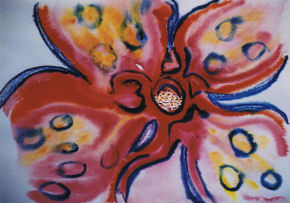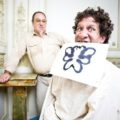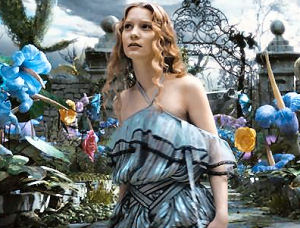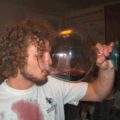
Pathological gambling and hypersexuality are two of the better documented side-effects of Parkinson’s disease medications, but researchers say that dopamine therapy can also trigger the relentless pursuit of artistic endeavors.
Dopamine is a neurotransmitter that helps control the brain’s reward and pleasure centers. It also helps to regulate movement and emotional responses and enables people to recognize goals and work towards them. Parkinson’s disease is caused by dopamine deficiency and using drugs to increase dopamine levels in the brain is one of the most common treatments for the disease.
Reporting their findings in the European Journal of Neurology, the researchers say that some Parkinson’s disease patients can suddenly start producing pictures, sculptures, novels and poetry when they start taking dopamine therapy. Their passion for their new-found interests can become so overwhelming that they ignore other basic aspects of their everyday life, say the researchers from the Centro Parkinson e Disordini del Movimento (Milan).
The researchers worked with 36 patients with Parkinson’s disease – 18 with increased artistic production and 18 without – and compared them with 36 healthy controls. None of the patients had engaged in artistic hobbies before they took dopamine.
“Patients were included in the artistic group if they started working on creative projects for two or more hours a day after starting taking dopamine,” explains lead author Dr Margherita Canesi. “Our findings suggest that the patients’ newly acquired artistic skills were probably there all along, but did not start to emerge until they took the dopamine therapy.” She adds that the artistic pursuits did not appear to be connected with abnormal repetitive behaviors, such as impulse control disorders or punding.
Some of the key findings included:
- The works presented by the patients were mainly drawings and paintings (83 percent), poetry and novels (50 percent) and sculpture (28 percent). In 78 percent of the cases, the patients showed more than one skill (mainly writing plus painting).
- Some of the patients produced art that was sold and books that were published, but the researchers judges some of the creative work to be of a poor quality.
- The Torrance Test of Creative Thinking showed that the artistic Parkinson’s disease patients had similar overall and individual scores to the healthy controls. However the non-artistic patients had significantly lower overall scores than both the healthy controls and the artistic patients.
- There was no correlation between the Torrance Test of Creative Thinking scores and the scores obtained using the Barratt Impulsivity Scale, one of the oldest and most widely used measures of impulsive personality traits.
Altered creative drive has previously been observed in patients who have neurodegenerative diseases or have had a stroke. However, the physiological understanding of creativity is difficult to establish and quantify.
Related:
Discuss this article in our forum
Link Between Creative Genius And Mental Illness Established
Creative types more likely to cheat
Sexual Success And The Schizoid Factor
More Evidence For Link Between Mood Disorders And Creativity








Comments are closed.